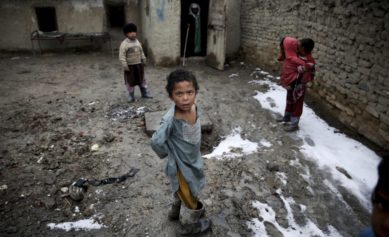Recent research into the education of African-American students reveals the surprising finding that in the suburbs, black boys appear to have a much easier time assimilating and being accepted because the stereotypes about African-American male children help them in social situations, while the stereotypes for black girls appear to harm them.
In addition, with studies showing that student school success depends largely on parent income, a huge increase in the percentage of poor students in the U.S. over the past decade has dire implications for the nation in coming years.
In 2000, there were just four states where at least half of all public students came from low-income families—designated by families eligible for free or reduced-price lunch (families earning below 185 percent of the poverty line).
But 2011, the number of states had exploded from four to 17, an increase of more than 400 percent. Across the entire nation, 48 percent of kids qualified as low income, up from 38 percent a decade earlier. A map showing poor states reveals that nearly all of them are concentrated in the South, except for California, Oregon and Nevada in the West.
So nearly 1 in 3 states has a majority of its students considered low-income, and half the students in the nation meet that criteria, meaning the relatively weak academic performance of American students is significantly related to the poverty of American students—and the academic performance will only get worse in future years unless poverty is reduced.
“The worst thing about these numbers may be that they’re a glimpse of the future,” said a story in The Atlantic. “Students from low-income families tend to end up parents of low-income families. And on it goes.”
A recent report published in the American Sociological Association’s Sociology of Education journal by Megan M. Holland, a professor at the University of Buffalo and a recent Harvard Ph.D., found that minority boys, because of stereotypes about their supposed athleticism and “coolness,” fit in better than minority girls in suburban schools.
Holland studied black students who were bussed to a predominantly white high school in suburban Boston. She found that black boys participated in sports and non-academic activities at much higher rates and that racial narratives about black males resulted in increased social rewards for the boys, while those same factors contributed to the isolation of girls.
Another study conducted by Simone Ispa-Landa at Northwestern University, looking at a program called Diversify, found that “as a group, the Diversify boys were welcomed in suburban social cliques, even as they were constrained to enacting race and gender in narrow ways.” On the other hand, Diversify girls “were stereotyped as ‘ghetto’ and ‘loud’”—behavior that, when exhibited by the boys in the program, was socially rewarded.
Ispa-Landa also found that because of the gender dynamics present at the school—the need to conform to prevalent male dominance—“neither the white suburban boys nor the black Diversify boys were interested in dating” the black girls, who were seen by boys at their schools as “aggressive” and not having the “Barbie doll” look.
The boys felt that dating the white girls was “easier” because they “can’t handle the black girls.”
The black boys also would play into stereotypes of black males as being cool or athletic by seeming “street-smart.” Many of the boys said they felt safer and freer at the suburban school because they would not be considered “tough” at their own schools—and to maintain that social dominance, the boys engaged in racial performance, getting into show fights with each other to appear tough and using rough, street language around their friends.
But the urban signifiers that gave the boys so much social acceptance were held against the girls—while the boys could wear hip-hop clothing, the girls were seen as “ghetto” for doing the same. The boys could display a certain amount of aggression, but the girls felt they were penalized for doing so.


